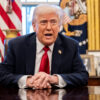A recent survey showed that although the COVID-19 pandemic remains a significant cause of unemployment and underemployment among Alabama residents, it is no longer the main barrier to finding work.
The Governor’s Office of Education and Workforce Transformation and the Alabama Workforce Council conducted the fourth iteration of the Alabama Survey of the Unemployed and Underemployed to measure awareness and attitudes towards new job training programs in Alabama among underemployed and unemployed Alabamians.
At least three-quarters of respondents said they are very likely to seek entry into the workforce in 2023.
Almost half of the respondents, 45 percent, said that COVID-19 has contributed to their current state of underemployment or unemployment.
But the top barrier now according to respondents is transportation (21 percent) followed by personal health and familial obligations. One in five Alabama job seekers cited transportation as their greatest barrier to full-time employment, and 31 percent said it was their primary reason for being either unemployed or underemployed. Lack of transportation is particularly daunting for low-income and urban jobseekers, while older workers are hampered more by health issues.
The survey shows men have rebounded as the number of men who have been underemployed for longer than six months has decreased. Women are 11 percent more likely than men to have been underemployed longer than six months. Workers over the age of 35 are over 20 percent more likely to be underemployed for more than six months than workers under 35. Women are three times more likely than men to cite familial obligations as a barrier to work.
Earning more money has become the preeminent reason for changing industries for both men and women, though women tend to place greater emphasis on reducing stress and a flexible schedule.
The top concerns at the height of the pandemic, stability, and consistent wages, have fallen to secondary concerns. High-income earners are more likely to seek an industry with a more flexible workload and schedule. Now 83 percent of unemployed and underemployed workers are willing to apply for non-remote work, up from 77 percent from the height of the pandemic.
When it comes to free training programs, business administration, human services, and information technology garner the most interest. A plurality of respondents said earning a certificate or license is their main goal when receiving job training or education— 41 percent of respondents said additional training is too expensive. A plurality of unemployed and underemployed workers see value in obtaining a credential before seeking full-time employment. Only 20 percent of respondents completed additional job training while underemployed or unemployed.
At least 85 percent of respondents said they were more likely to apply for a job after reading about available programs and resources. Men and workers under 35 prefer skills training programs when considering applying for jobs, while women and workers over 35 are more interested in pursuing resources like community college, job fairs, and career coaching.





















































